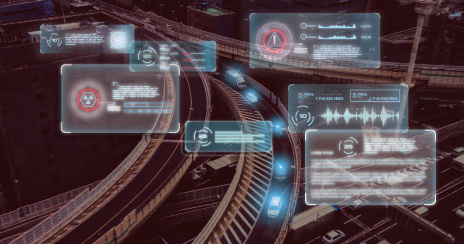Toyota Systems' Digitalization InitiativesLeading Digitalization to Realize DX of the Toyota Group
Direction of digitalization
Toyota Systems will take on the challenge of ensuring a successful digital shift in order to allow Toyota and the entire Toyota Group to be among the world's top digital companies. In more specific terms, we will support Toyota and the Toyota Group through both digitalization and legacy modernization.
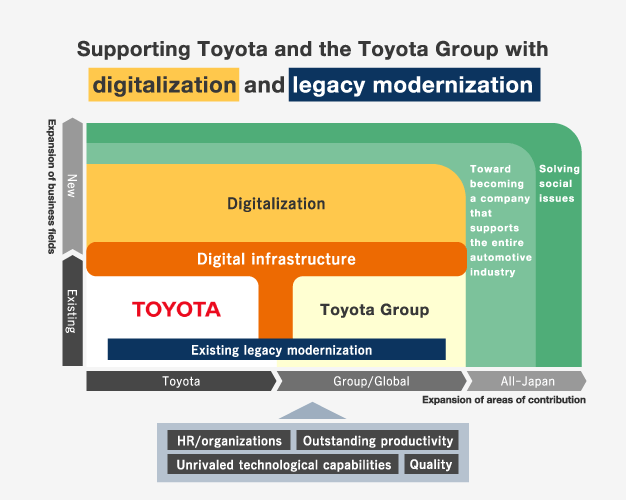
Digitalization is defined as the sharing of data and the transformation of the way work is done through the use of digital technology, as well as the creation of new businesses and services. At Toyota Systems, we will support the digitalization of Toyota and the Toyota Group, advancing this as a new field of business.
In addition, we will work on the modernization of existing legacy systems, our foundation. And by building a stable foundation, we will conduct activities to solidify our footing for Toyota and the Toyota Group.
By enhancing our technological capabilities and quality through these efforts, we aim to become a company that supports not only Toyota and the Toyota Group but also the entire automotive industry, and one that helps solve future issues facing society.
Initiatives toward digitalization
We will focus our efforts on three areas of digitalization: customer-focused support, open data, and legacy modernization. Our aim by doing so is the realization of business transformation and work style reforms.
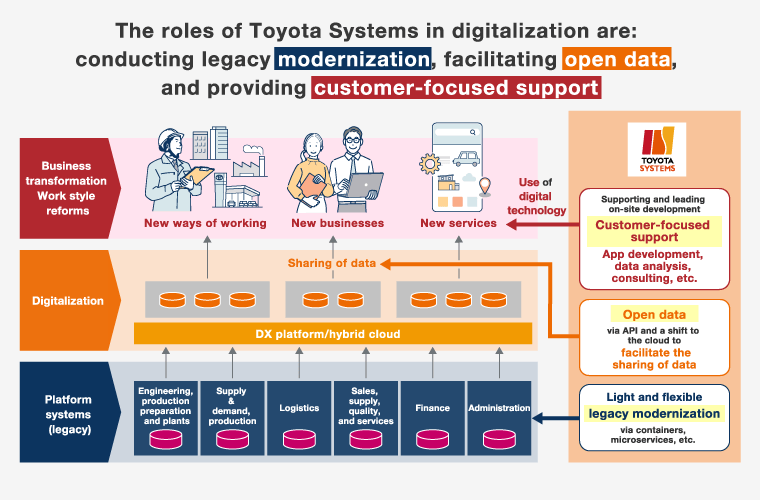
Customer-focused support
We will realize new ways of working and new businesses and services that utilize digital technologies through activities that support and lead on-site development, such as app development, data analysis, and consulting.
Open data
The sharing of data via APIs is realized on Toyota Systems' own DX cloud platform and hybrid clouds. Utilizing various shared data, we aim to create new businesses and services.
Legacy modernization
By using containers and microservices, we will transform legacy core systems into lighter and more flexible systems. This combination of the cloud and modernized core systems will enable digitalization.
Creating environments for digitalization
1. Provide safe and secure environments where digitalization platforms and services coexist
We will further strengthen and transform the basic infrastructure of legacy core systems. Together with this, we will realize an architecture that combines the cloud and other digitalization platforms and services. In addition, we will provide safe and secure environments by making our intranet and the Internet more secure.
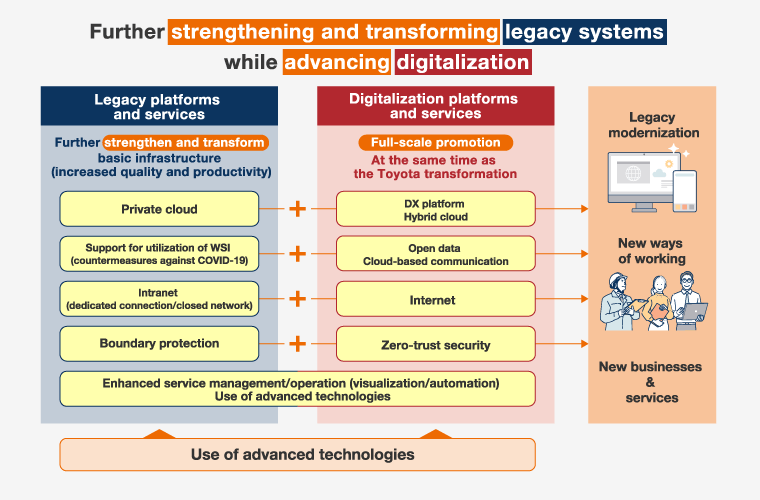
2. Improving work environments and establishing a system for developing digital HR
In order to realize individuals and organizations with strong on-site and technological expertise, we will implement reforms so that each and every individual can become an IT professional. To do so, we are working to improve work environments—from conventional development environments to digital development environments—as part of our efforts to establish digital environments. In addition, we will develop a digital HR development system that will enable all employees, not just young employees, to acquire basic knowledge and entry-level skills.
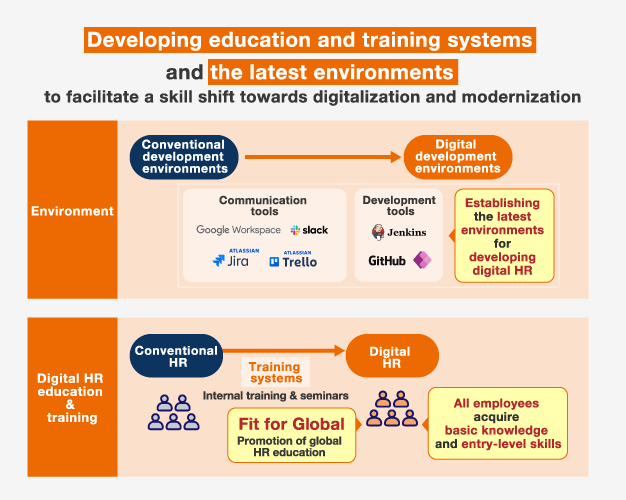
Key performance indicators (KPI)
We set and inspect KPIs for the promotion of digitalization and promote DX activities.
| KPI | Concept behind KPIs | Number of digital HR | We aim to increase the number of digital HR by keeping digitalization and modernization within our grasp, strengthening internal resources, and establishing and utilizing digital development environments. | System development productivity | By continuing and enhancing activities aimed at increasing productivity in system development, we aim to achieve outstanding improvements in productivity. | System quality (number of major failures) |
In addition to our efforts regarding digitalization, we aim to reduce the number of serious failures through increased focus on quality in order to solidify our footing in the era of DX. | Sales | We aim to boost sales through the promotion of digitalization, including customer-focused support, open data, and legacy modernization. |
|---|


